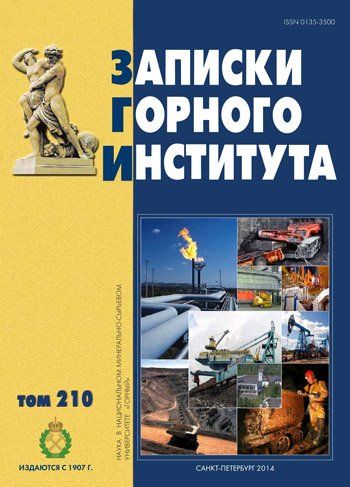Preliminary preparation of oil for primary processing
- 1 — Ph.D., Dr.Sci. professor National Mineral Resources University (Mining University)
- 2 — Ph.D., Dr.Sci. Associate professor National Mineral Resources University (Mining University)
- 3 — Ph.D. Associate professor National Mineral Resources University (Mining University)
- 4 — Ph.D. Associate professor National Mineral Resources University (Mining University)
Abstract
Oil supplied for primary processing always undergoes preliminary preparation, the purpose of which is to eliminate the harmful effect of water and salt contained in the oil. It is thought that corrosion of the equipment is connected mainly with chlorides of magnesium and calcium, which are subjected to hydrolysis with the formation of hydrochloric acid. Under the influence of hydrochloric acid the destruction (corrosion) of metal equipment at technological plants occurs (especially refrigerating-condensing and heatexchange equipment, furnaces of rectification units etc.). The authors of the article, on the basis of thermodynamic calculations, provide their point of view on this process and give a methodology by which the process of preliminary oil dehydration and desalting can be controlled. The thermodynamic calculations executed for standard conditions on the basis of refer-enced data confirm a high probability of chemical interaction of iron with hydrogen ions, hy-drogen sulphide and especially with carbonic acid. This testifies to high activity of the carbon dioxide dissolved in water and the impossibility of hydrolysis of ions of magnesium, calcium and iron. The calculations show that only the hydrolysis of magnesium chloride is possible tak-ing into account the ionic composition of the water phase in the oil. It should be noted that the presence of ions of chlorine shifts the iron potential in a nega-tive direction and increases the speed of corrosion of petrochemical equipment. The solution of this problem is in the development of modern methods of crude oil dehydration and desalting. It is also, however, in an intensification of the processes of mixing water-oil emulsions with wash-ing water by using various physical fields (for example, ultrasound) and creating new effective mixing devices on the basis of them.
